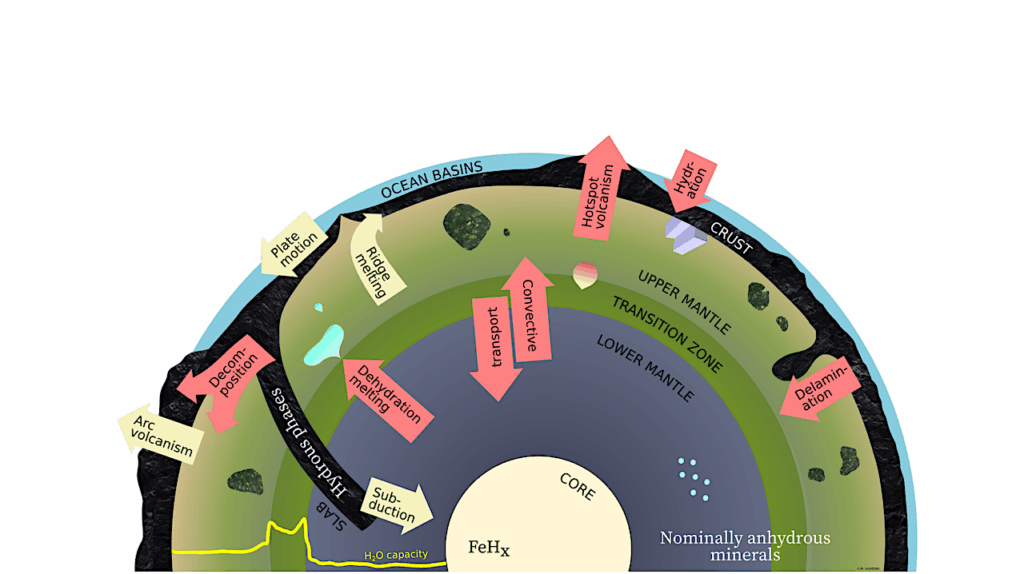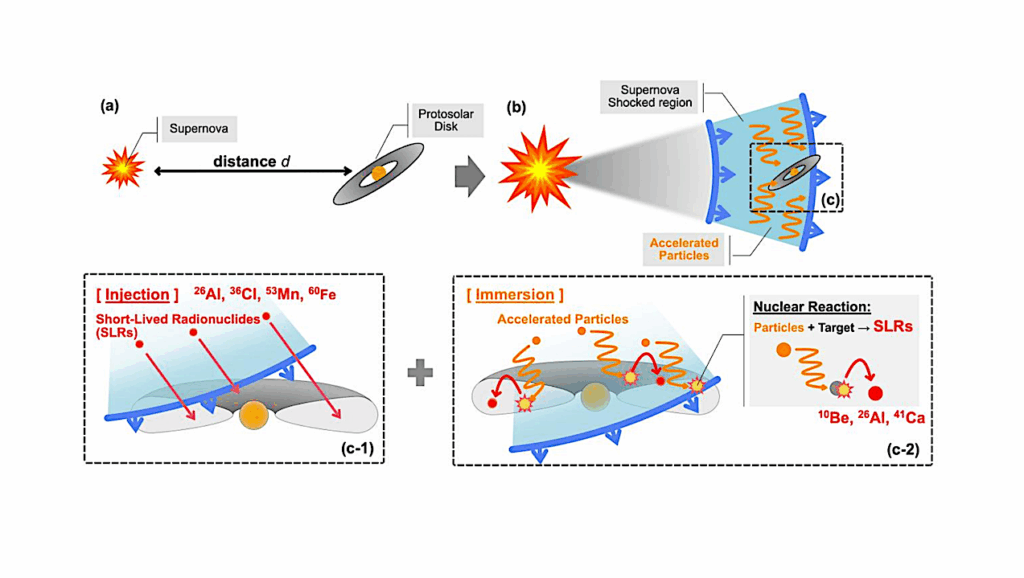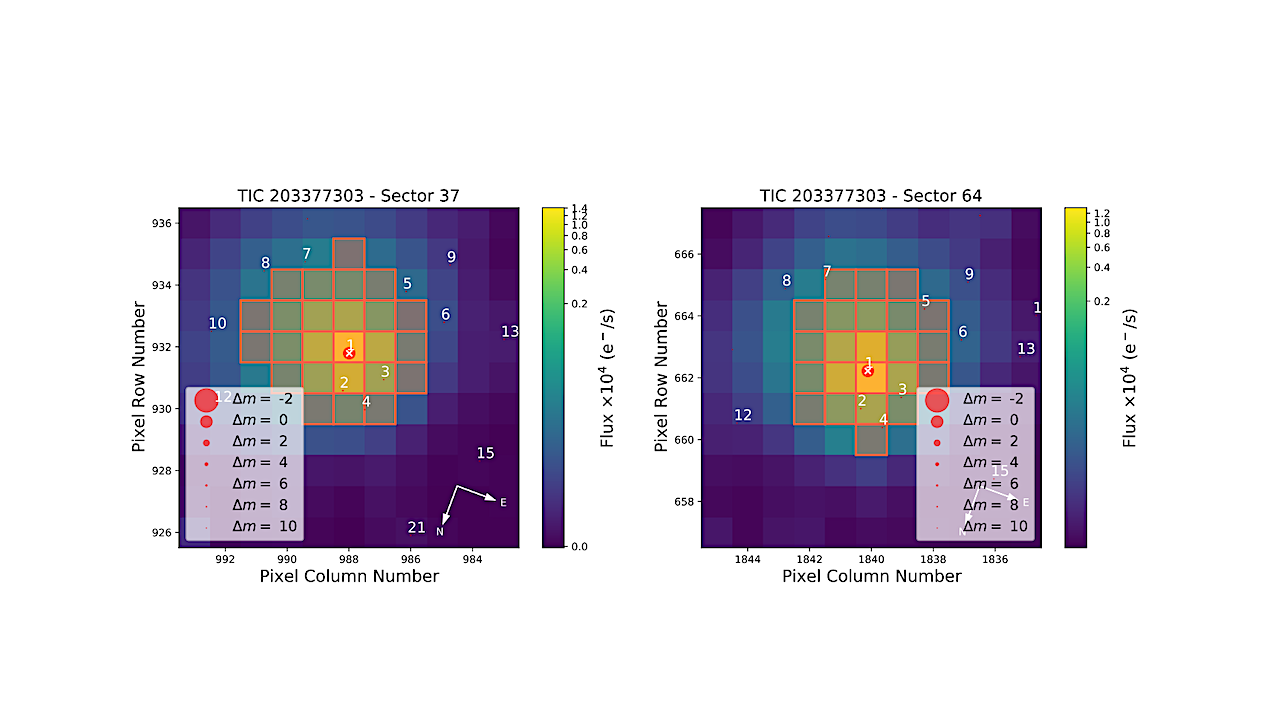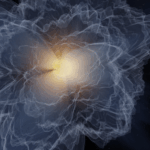Now Reading: Evidence For Sulfur Chemistry In The Atmosphere Of The Warm Sub-Neptune TOI-270 d
-
01
Evidence For Sulfur Chemistry In The Atmosphere Of The Warm Sub-Neptune TOI-270 d
Evidence For Sulfur Chemistry In The Atmosphere Of The Warm Sub-Neptune TOI-270 d
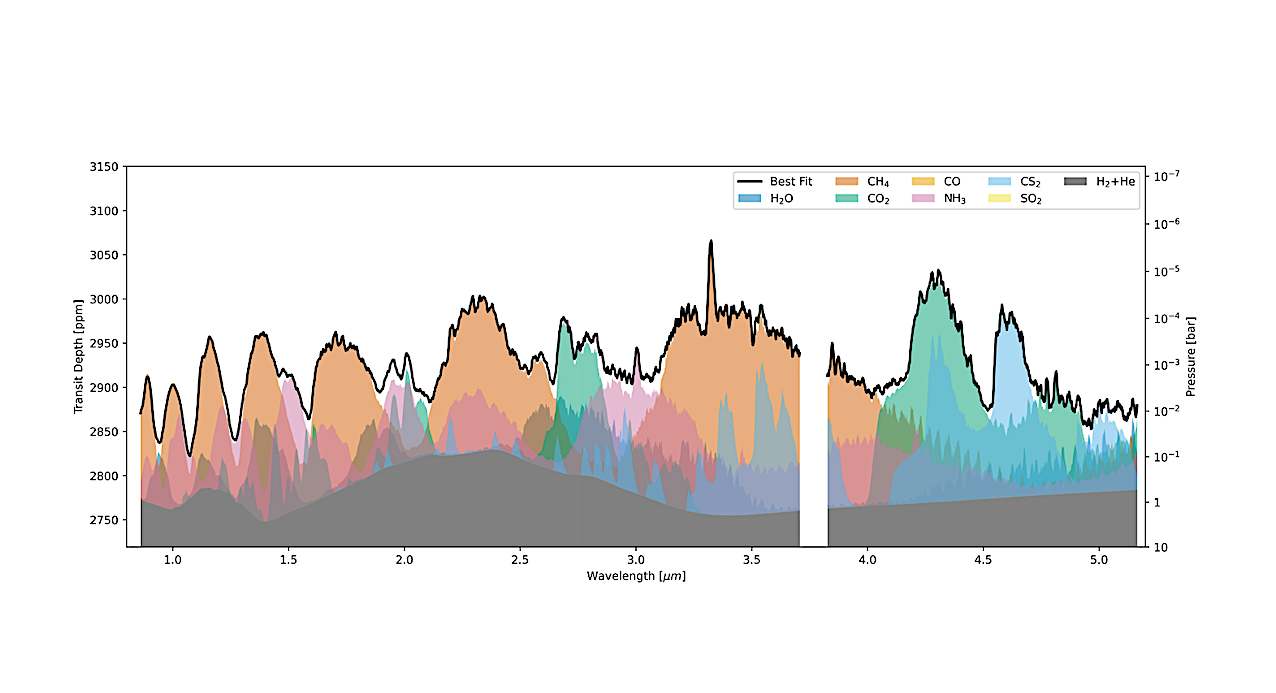

Breakdown of our best-fit model for the transit spectrum of TOI-270 d. Absorption bands of CH4, CO2 are clearly visible and one isolated absorption band of CS2 contributes at 4.6 µm. The impact of water, CO and SO2 on the spectrum is negligible. The model has been smoothed for visual clarity. astro-ph.EP
Context: Recent JWST measurements allow access to the near-infrared spectrum of the sub-Neptune TOI-270 d, for which two different interpretations, a high-metallicity miscible envelope and a lower metallicity hycean world, are currently in conflict.
Aims: Here, we reanalyze the published data and reproduce previously retrieved molecular abundances based on an independent data reduction and a different retrieval framework. The aim of this study is to refine the understanding of TOI-270 d and highlight considerations for JWST data analysis. Additionally, we test the impact of data resolution on atmospheric retrieval calculations.
Methods: We reduce one JWST NIRSpec G395H and one NIRISS SOSS GR700XD transit dataset using the Eureka! pipeline and a custom MCMC-based light curve fitting algorithm at the instruments’ native resolutions. The atmospheric composition is estimated with the updated BeAR retrieval code across a grid of retrieval setups and spectral resolutions.
Results: Our transit spectrum is consistent with previous studies, except at the red end of the NIRISS data. Our retrievals support a higher mean molecular weight atmosphere for TOI-270 d. We provide refined abundance constraints and find statistically favored model extensions indicating either sulfur-rich chemistry with species such as CS2, CS, and H2CS, or the possible presence of CH3Cl or CH3F. However, Bayesian inference cannot distinguish between these scenarios due to similar opacities below 4 microns.
Conclusions: Our analysis reinforces TOI-270 d as a highly interesting warm sub-Neptune for atmospheric studies, with a complex chemistry in a cloud-free upper atmosphere. However, its exact nature remains uncertain and warrants further detailed photochemical modeling and observations.
Lukas Felix, Daniel Kitzmann, Brice-Olivier Demory, Christoph Mordasini
Comments: Submitted to A&A
Subjects: Earth and Planetary Astrophysics (astro-ph.EP)
Cite as: arXiv:2504.13039 [astro-ph.EP] (or arXiv:2504.13039v1 [astro-ph.EP] for this version)
https://doi.org/10.48550/arXiv.2504.13039
Focus to learn more
Submission history
From: Daniel Kitzmann
[v1] Thu, 17 Apr 2025 15:52:23 UTC (34,096 KB)
https://arxiv.org/abs/2504.13039
Astrobiology, Astronomy, Astrochemistry, Biosignatures,
Stay Informed With the Latest & Most Important News
Previous Post
Next Post
-
 012024 in Review: Highlights from NASA in Silicon Valley
012024 in Review: Highlights from NASA in Silicon Valley -
 02Panasonic Leica Summilux DG 15mm f/1.7 ASPH review
02Panasonic Leica Summilux DG 15mm f/1.7 ASPH review -
 03From Polymerization-Enabled Folding and Assembly to Chemical Evolution: Key Processes for Emergence of Functional Polymers in the Origin of Life
03From Polymerization-Enabled Folding and Assembly to Chemical Evolution: Key Processes for Emergence of Functional Polymers in the Origin of Life -
 04How New NASA, India Earth Satellite NISAR Will See Earth
04How New NASA, India Earth Satellite NISAR Will See Earth -
 05And Thus Begins A New Year For Life On Earth
05And Thus Begins A New Year For Life On Earth -
 06Astronomy Activation Ambassadors: A New Era
06Astronomy Activation Ambassadors: A New Era -
07SpaceX launch surge helps set new global launch record in 2024












